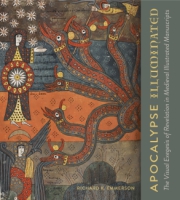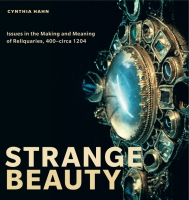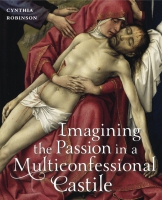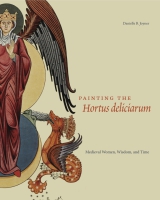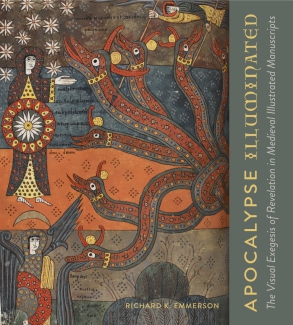
Apocalypse Illuminated
The Visual Exegesis of Revelation in Medieval Illustrated Manuscripts
Richard K. Emmerson
Apocalypse Illuminated
The Visual Exegesis of Revelation in Medieval Illustrated Manuscripts
Richard K. Emmerson
“Emmerson’s wide-reaching analysis of Apocalypse illuminations achieves a successful balance between focusing on individual books and situating them within their historical contexts. Handsomely produced, it will interest all who are drawn to these stunningly beautiful illuminated books of scripture.”
- Media
- Description
- Reviews
- Bio
- Table of Contents
- Sample Chapters
- Subjects
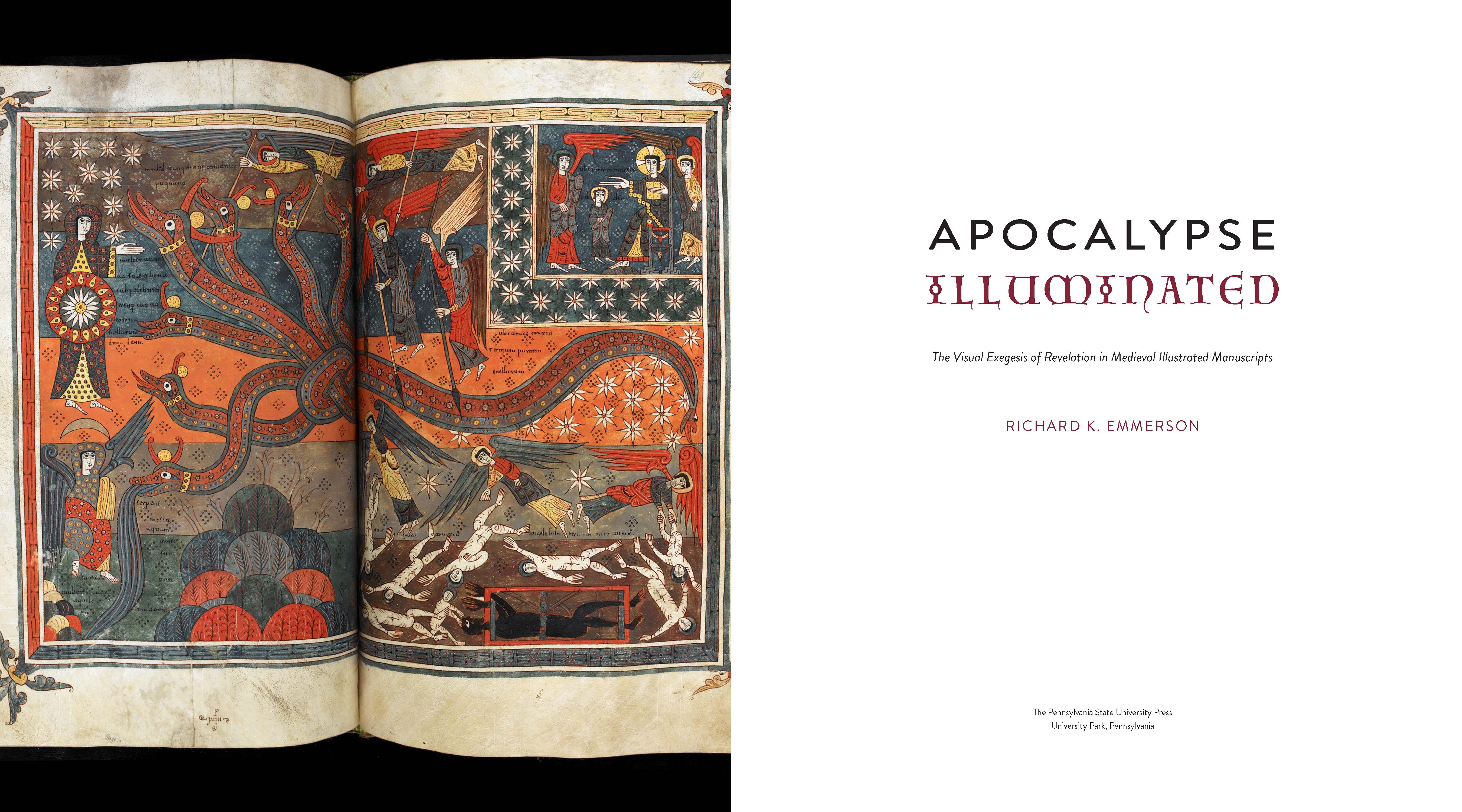
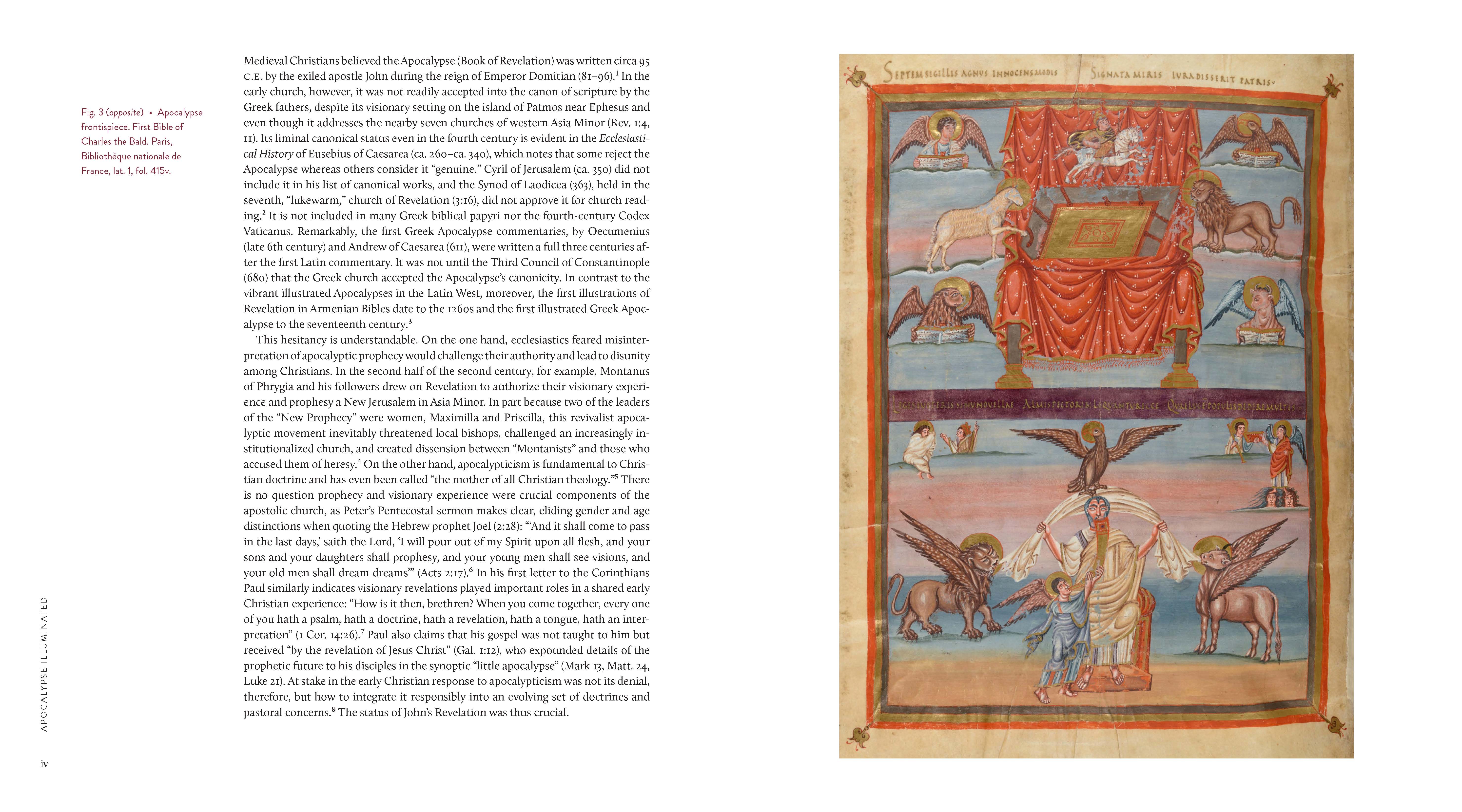
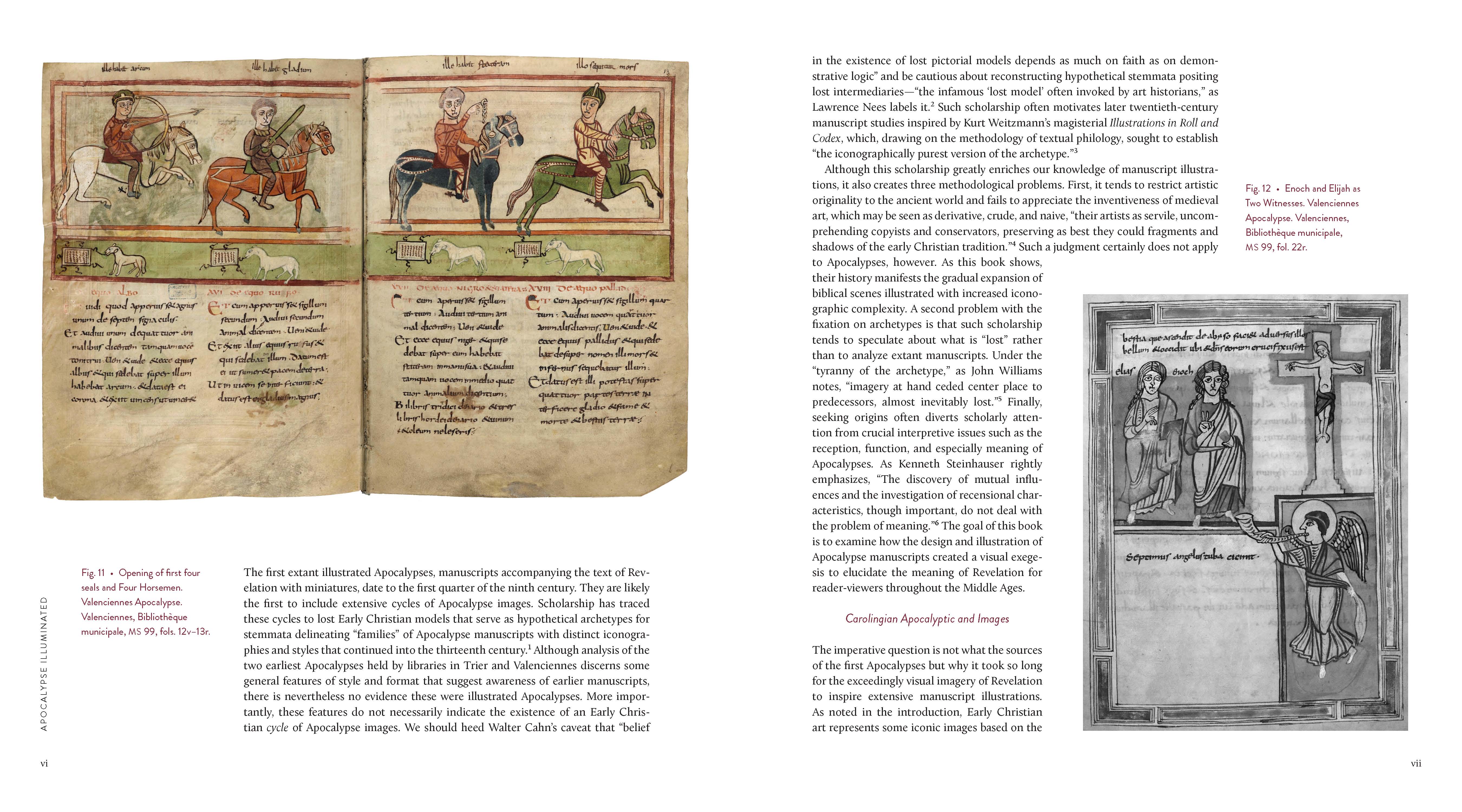
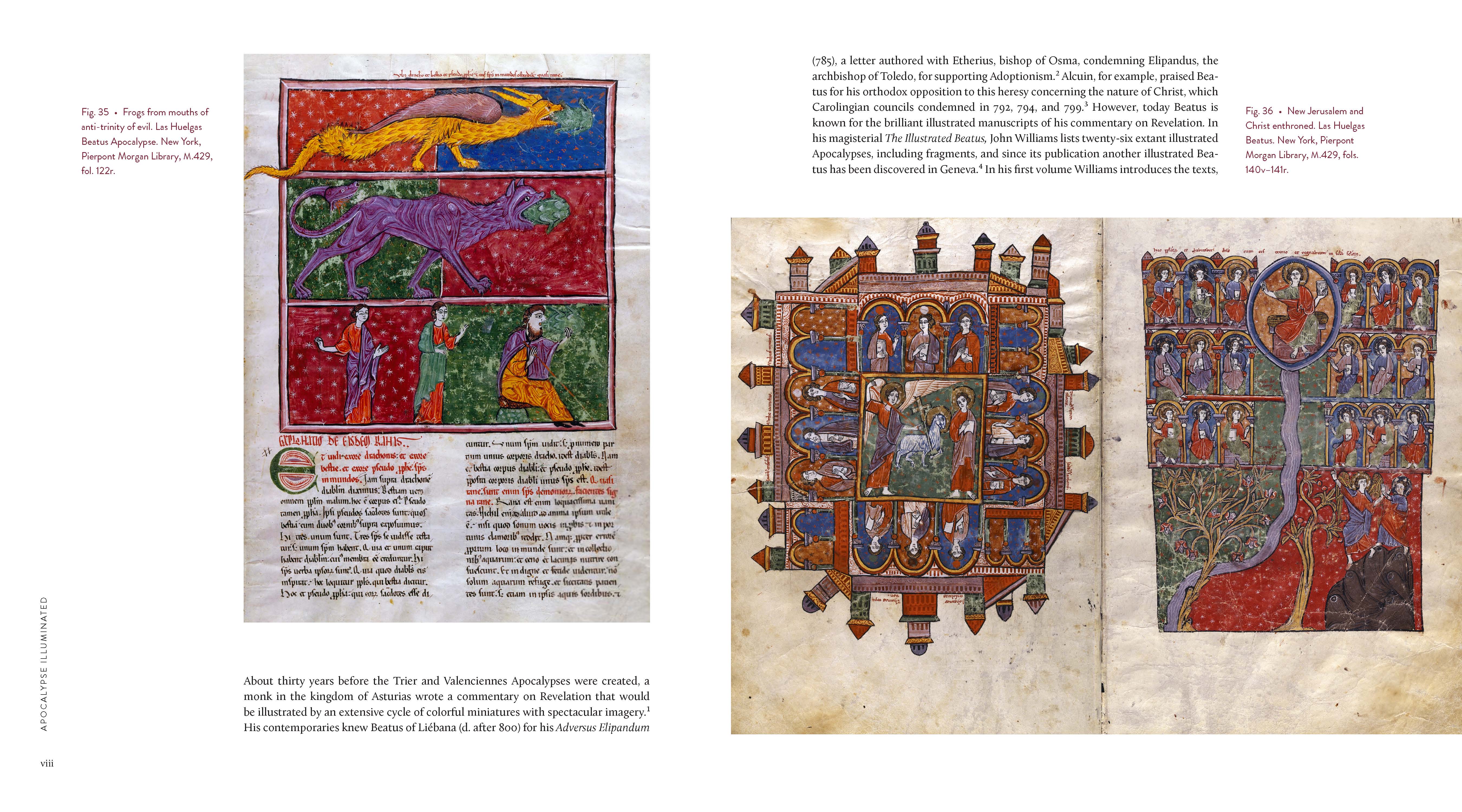
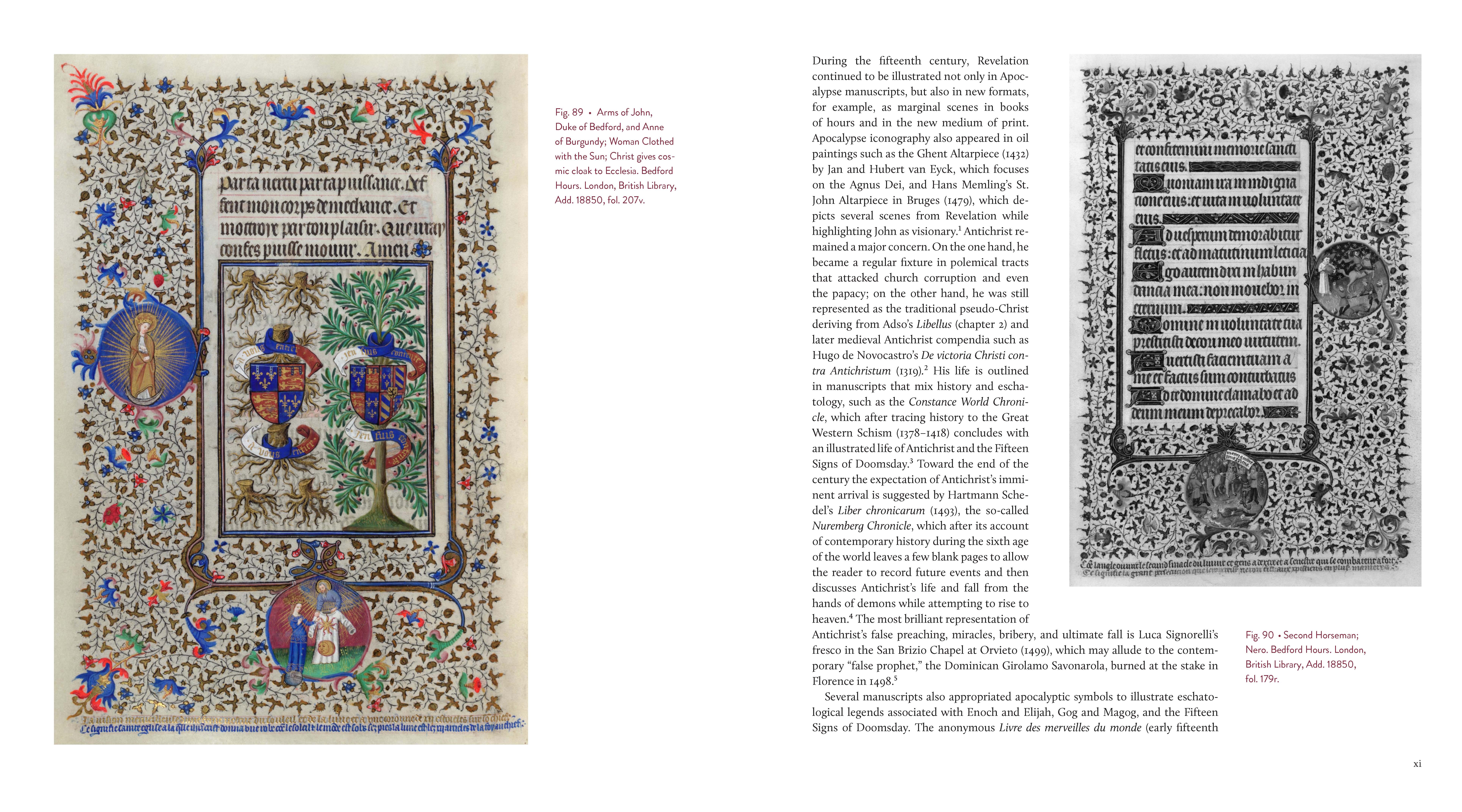
Focusing on twenty-five of the most renowned illustrated Apocalypse manuscripts, from the earliest extant Carolingian ones produced in the ninth century to the deluxe Apocalypse made for the dukes of Savoy and completed in 1490, Emmerson examines not only how they illustrate the biblical text, but also how they interpret it for specific and increasingly diverse audiences. He discusses what this imagery shows us about expectations for the Apocalypse as the year 1000 approached, its relationship to Spanish monasticism on the Christian-Muslim frontier and to thirteenth-century Joachimist prophetic beliefs, and the polemical reinterpretations of Revelation that arose at the end of the Middle Ages. The resulting study includes historical and stylistic comparisons, highlights innovative features, and traces iconographic continuities over time, including the recurring apocalyptic patterns, events, figures, and motifs that characterize Apocalypse illustrations throughout the Middle Ages.
Gorgeously illustrated and written in lively and accessible prose, this is a masterful analysis of over seven hundred years of Apocalypse manuscripts by one of the most preeminent scholars of medieval apocalypticism.
“Emmerson’s wide-reaching analysis of Apocalypse illuminations achieves a successful balance between focusing on individual books and situating them within their historical contexts. Handsomely produced, it will interest all who are drawn to these stunningly beautiful illuminated books of scripture.”
“Lavishly adorned with photographs of noteworthy Apocalypses selected from the most important, interesting, and influential illustrative traditions, the book focuses on recurring apocalyptic patterns, events, figures, and motifs that characterize medieval Apocalypse illustrations, in order to substantiate historical and stylistic comparisons, trace iconographic continuities over time, and highlight innovative features.”
“In this graciously, colorfully illustrated book, Emmerson sums up decades of research on Revelation in medieval art to provide a sweeping overview of St. John’s Apocalypse manuscripts from the ninth-century Carolingian Renaissance to the cusp of the printing press.”
“[I]t is his sympathetic grasp of how the images function, grounded in an extensive knowledge of the manuscripts and the subtle nuances of medieval exegetical traditions, which makes this book so compelling. Readers will find in Emmerson a trustworthy and illuminating guide, like the interpreting angel of John’s Apocalypse or the ever present figure of John himself.”
“Just as Virgil led Dante through the underworld, so too Richard Emmerson guides his readers through the visionary landscape of medieval Apocalypse illustration from its early medieval origins right through to the Reformation. One could ask for no better guide. The culmination of a career dedicated to the expert examination of the Book of Revelation and its immeasurable impact on medieval culture, Emmerson’s book provides a confident overview peppered with penetrating insights.”
“A tour de force of scholarship that brings together manuscript studies, art history, literary studies, and the history of apocalyptic theology in a compelling and readable summary of the history of medieval illustrations of the Book of Revelation. This is a paradigmatic example of the interdisciplinary approach that is so often praised and so seldom really practiced.”
“This splendid study, the product of a lifetime of novel research, refocuses the discourse on historical apocalypticism. Richard Emmerson demonstrates that medieval illustration of this most visual and sensorial of biblical texts was an exegetical act. Rather than a product of passing, prognostic impulses, the illuminated Book of Revelation is located at the center of medieval epistemology. The result is a work as rich and compelling as the subject it explores.”
“If I may follow medieval exegetes in seeking meaning beneath surface content, I would suggest that this book’s most profound contribution lies less in its elucidation of medieval Apocalypse manuscripts (though it does that beautifully) than in its revelation of pictorial art’s capacity to exceed its textual referents—to comment on, redirect, defy, sharpen, expand, transform, in short, to illuminate the words that join it. In this sense it is essential reading not just for art historians but for anyone interested in medieval techniques of communication.”
Richard K. Emmerson is Visiting Distinguished Professor of Art History at Florida State University and Dean Emeritus of Liberal Arts, Manhattan College. He is the author of Antichrist in the Middle Ages: A Study of Medieval Apocalypticism, Art, and Literature, coauthor of The Apocalyptic Imagination in Medieval Literature, and coeditor of The Apocalypse in the Middle Ages.
Contents
List of Illustrations
Acknowledgments
List of Abbreviations
Introduction
1 John’s Apocalypse and Its Interpretation
2 The First Illustrated Apocalypses
3 Beatus Apocalypses and Spanish Monasticism
4 The Apocalypse Allegorized, Moralized, and Historicized
5 The Epitome of Apocalypse Illustration: The Anglo-French Tradition
6 The Apocalypse at the End of the Middle Ages
Conclusion
Notes
Bibliography
Index of Manuscripts
Index of Biblical References
General Index
From the Introduction
This book synthesizes my thinking about illustrated Apocalypse manuscripts over a period of forty years, examining why and how the Revelation of John was so extensively and strikingly illustrated during the Middle Ages. It studies almost seven hundred years of medieval illustrated Apocalypses, extending from the earliest extant manuscripts, which were produced during the Carolingian period (from ca. 800), to the deluxe Apocalypse made for the dukes of Savoy and completed in 1490. This is a huge undertaking, for more than 130 illustrated Apocalypses are extant, making a comprehensive analysis impossible. Rather than surveying so many manuscripts, the book examines some noteworthy Apocalypses selected from the most important, interesting, and influential illustrative traditions. To substantiate historical and stylistic comparisons, trace iconographic continuities over time, and highlight innovative features, our analysis focuses on recurring apocalyptic patterns, events, figures, and motifs that characterize Apocalypse illustrations throughout the Middle Ages. Significant ancillary motifs that become integral to Apocalypse manuscripts, such as the role of the visionary John and the persecutions of Antichrist, also receive sustained attention.
The Apocalypse or Revelation of John, which concludes the Christian Bible, is one of the most memorable books of scripture, developing a rich symbolism, complex narrative, and stunning visual imagery. As Austin Farrer notes, it “is the one great poem which the first Christian age produced, it is a single and living unity from end to end, and it contains a whole world of spiritual imagery to be entered into and possessed.” In contemporary popular culture “apocalypse” often implies catastrophic destruction and violent suffering, but the term simply means an opening of hidden mysteries, a revealing of the divine that imparts insights into God’s purposes in history and beyond. For scholars of ancient Near Eastern religions it designates a visionary literature prominent in intertestamental Judaism and early Christian communities (ca. 200 B.C.E.–200 C.E.). John J. Collins defines “apocalypse” as “a genre of revelatory literature with a narrative framework, in which a revelation is mediated by an otherworldly being to a human recipient, disclosing a transcendent reality which is both temporal, insofar as it envisages eschatological salvation, and spatial, insofar as it involves another, supernatural world.” The term, clearly fitting the late first-century Apocalypse of John, thus refers to both the literary form and the biblical book from which the genre takes its name. It should be noted, furthermore, that although judgment against evildoers, both human and demonic, and sometimes violent suffering and retribution may be prominent in apocalypses, their outlook is not primarily pessimistic, since divine justice ultimately prevails, and the elect are rewarded for their steadfastness.
This hopeful stance structures the dualistic balancing of good and evil in the Apocalypse of John. It describes as many jubilant scenes, heavenly champions, and cherished promises as plagues and earthquakes, ruthless persecutors, and devastating destruction. Structurally, demonic monsters, such as the great red Dragon (Rev. 12) or seven-headed Beast from the Sea (Rev. 13:1–10), are offset by the sacrificial Lamb of God (Rev. 5:6) or the Rider “faithful and true” (Rev. 19:11–16); the opening of the bottomless pit releasing Locust Beasts with scorpion tails (Rev. 9) is answered by the opening of the heavenly Temple of God revealing the adoration of the Twenty-Four Elders (Rev. 11:15–19); the Whore of Babylon, who fornicates with the kings of the earth (Rev. 17), is balanced by the Woman Clothed in the Sun, who delivers her child to heaven (Rev. 12); those marked with the enigmatic “666” designating allegiance to the Beast (Rev. 13:16–18) are contrasted to the 144,000 marked with the name of the Lamb (Rev. 14:1); and, finally, the city of Babylon, the habitation of demons (Rev. 18:2), is replaced by the New Jerusalem enclosing the throne of the Lamb and the river and tree of life (Rev. 22:1–2). At its conclusion, all mysteries have been revealed, and John is told not to seal the book because “the time is at hand” (Rev. 22:10). The Apocalypse ends with a promise, a prayer, and a blessing: “He that giveth testimony of these things saith, ‘Surely I come quickly.’ Amen. Come, Lord Jesus. The grace of our Lord, Jesus Christ, be with you all. Amen” (Rev. 22:20–21).
The influence of the Apocalypse on medieval ecclesiastic and political history, visionary mysticism, and literary culture was pervasive. It was extensively represented in medieval art, from Early Christian mosaics depicting iconic images of the Lamb of God (Rev. 5:6–14; 7:9–17; 14:1), Four Living Creatures (Rev. 4:6–9; 5:8–14), and Christ enthroned in majesty (Rev. 4 and 5), through Romanesque fresco cycles and Gothic sculptural programs, to fifteenth-century masterpieces such as Hans Memling’s St. John Altarpiece and Albrecht Dürer’s Apocalypse woodcuts. Other prominent apocalyptic themes include the Four Horsemen (Rev. 6:1–8), the Souls Under the Altar crying for vengeance (Rev. 6:9–11), the Two Witnesses killed by the Beast from the Abyss (Rev. 11:3–13), the Woman harassed by the Dragon (Rev. 12), the anti-trinity of evil (Rev. 13; 16:13–14), the Whore seated on the waters and riding the Beast (Rev. 17), the Marriage Feast of the Lamb (Rev. 19:7–9), the chaining of the Dragon and release of Gog and Magog (Rev. 20:1–8), and the New Jerusalem (Rev. 21). In the Middle Ages, when the Bible was often read in separate books or gatherings of books—such as the Pentateuch, Prophets, Gospels, and Pauline Letters—the Apocalypse was second only to Psalms in its number of single-volume illustrated manuscripts. Although some offer only a few illustrations accompanying the biblical text, most include substantial cycles of miniatures ranging from forty to over a hundred images and as many as 312 scenes. They exemplify the medieval concern with “vision” as a means to achieve spiritual understanding.
Jeffrey Hamburger points out that visionary experience involves “a double mediation,” since visionaries first receive their visions and then communicate them to readers and interpreters. John’s visions in illustrated Apocalypses entail additional intermediaries, for they are copied for medieval readers, often include commentaries explaining their meanings, and, most importantly for this study, add pictures not only illustrating but often interpreting the visions. A major focus of analysis in this book will therefore be the ways manuscript images produce meaning beyond the texts they illustrate, how they develop their own visual exegesis of the Apocalypse. I understand visual exegesis to include not only images that take the place of, or fill the gaps in, a biblical text or commentary, but also those interpretive aspects of miniatures accompanying verbal texts that underscore or elaborate their meaning by emphasizing particular aspects of the visionary experience or even adding new details that can change meaning and, in some cases, challenge it. The image thereby creates a new visual “text” that aids the reader-viewer’s understanding of John’s visions. To understand how this visual exegesis works, we need to recognize the internal coherence of images and shun the temptation to focus only on their textuality, since they are multidimensional. In addition to their iconographic features, their compositions and forms generate meaning by interacting within the manuscript matrix not only with texts but also with other visual signifiers. In analyzing apocalyptic images, the following chapters will not only study their discursive elements, which depict details ultimately derived from biblical and exegetical texts, but also their figural features, which “belong to the image as a visual experience independent of language—its ‘being-as-image,’” as Norman Bryson explains.
Textual scholars sometimes fault medieval illustrations for not being “faithful” to the text, for exhibiting inaccuracies, for failing to depict precise textual details, or for including nontextual elements. Such criticism not only assumes the priority of word over image, but also misunderstands the nature of manuscript illustration, which follows its “own visual logic.” Attending to this visual logic informs my approach to Apocalypse miniatures, which can be exemplified briefly by the two-page opening of the early fourteenth-century Welles Apocalypse. In its miniature depicting John’s response to the voice inviting him to come up to heaven (Rev. 4:1–2), the visionary scrambles up a ladder into heaven’s open door and stretches to grasp an angel’s hand (fol. 117v; fig. 1). The ladder motif, adopted in other Apocalypses that include the same Anglo-Norman commentary, differs significantly from earlier representations in which John, sometimes led by an angel, looks through a door. The depiction of John actively climbing a ladder to reach into heaven, furthermore, is not based on the biblical text, which simply states: “And immediately I was in the spirit” (Rev. 4:2). It implies that John passively receives the spirit, taking no action whatsoever. The ladder motif is a form of visual exegesis particularly apt for this manuscript, however. It includes the Lumere as lais (Light for laypeople, 1267), a lengthy dogmatic compendium by Pierre d’Abernon de Fetcham written as a dialogue in Anglo- Norman couplets and intended to instruct laypersons and encourage their active participation in spiritual life. Significantly, such encouragement is given by the text on the folio facing the image (fol. 118r). It interrupts the biblical text calling John to “come up” in order to address the reader directly and point to the image: “As you can see in the adjacent figure here present on the other part of the facing leaf.” As Lucy Freeman Sandler notes, this unique instruction is inscribed below an initial “A” in which “a striking frontal female head” depicts the viewer’s gaze. The ladder motif, ultimately derived from Jacob’s visionary ladder (Gen. 28:10–19) and extensively discussed in monastic exegesis, reflects the later medieval appropriation of monastic imagery for vernacular lay devotion. John’s climbing the ladder thus models for the reader-viewer the need not only to look at the picture, but also to respond decisively, to seek actively the fundamental apocalyptic vision depicted across the page, which reveals Christ enthroned in majesty surrounded by the Twenty-Four Elders and Four Living Creatures.
Such powerful images typify medieval Apocalypses and exemplify how, as Bonaventure (1221–1274) notes, “the illumination of mechanical art is a way to the illumination of sacred Scripture.” Such illumination particularly helps the reader-viewer comprehend a visionary work such as Revelation, whose fluid and graphic text is often better evoked by images than explained by words, the images creating a visual exegesis that both illustrates and elucidates. Although most medieval manuscripts were not illustrated, because pictures were expensive, when the investment was made to have images accompany texts, as Michael Curschmann notes, “the expectation was obviously that two potentially competing modes of communication would come together for the purpose of mutual enhancement, resulting in something greater than the mere sum of its parts.” To examine how medieval Apocalypses achieve this “something greater,” our analysis will strive to be sensitive to both their images and their texts and to the ways the interaction of images and text on the manuscript page contributed to the reception and understanding of Revelation and active engagement with its meaning over the centuries. As Mary Carruthers argues, medieval art eschews the Romantic aspiration of “a willing suspension of disbelief” famously enunciated by Coleridge, but instead seeks to persuade its audience to action and to “‘a confident consent to believe.’”
This book also strives to balance analysis of the manuscripts as works of art in their own right with attention to their historical, religious, and social contexts. On the one hand, by focusing on specific miniatures in representative Apocalypses, we will see how the manuscript matrix encouraged the reader-viewer to interpret apocalyptic figures and events. The mise-en-page of the Welles Apocalypse opening (fig. 1) anchors text and image, while exemplifying what Hamburger describes as “the symbolic dimensions of the opening as revelation,” the effect of images and texts facing each other in the codex. As he notes, “The association of reading with revelation would never have taken hold had not the experience of opening and entering the space of the book, real and imaginary, itself been so profound.” On the other hand, the images need to be “anchored” within history as well. This book will therefore consider how Revelation was interpreted over time, how it was associated with other prophetic, didactic, liturgical, and devotional texts, and how apocalyptic expectations and historical events influenced the reception of these manuscripts. The goal is to understand the function and meaning of Apocalypses within a variety of specific interpretive communities throughout the Middle Ages.
(Excerpt ends here)
Mailing List
Subscribe to our mailing list and be notified about new titles, journals and catalogs.
